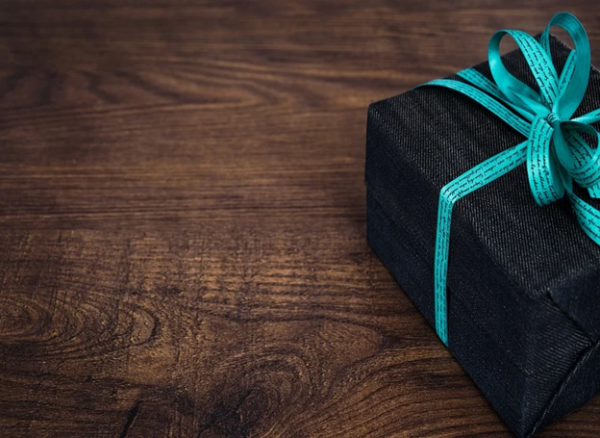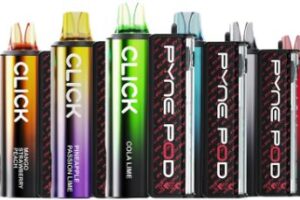
Whether it’s a traditional shelf or a virtual one, or both, you need to make your products stand out from the crowd. In a saturated marketplace, it’s imperative to pique customers’ curiosity to encourage them to buy more. Otherwise, you will share a small percentage of the market with tonnes of competitors, and your bottom line will diminish.
There’s no doubt that the product itself has to do some of the heavy lifting. For example, it has to be unique to draw shoppers in and make them interested. However, it’s also undeniable items that pop can be the difference between generating leads and securing essential conversions. It’s as if the design tells people everything they need to know.
Striking a balance is the key because you can’t rely on packaging all the time and vice versa. Still, it’s hard to think of original ways to make products stand out on shelves as visual merchandising might not be your forte.
Thankfully, you don’t have to be a master of the art to boost awareness of your brand and sell more units. Sometimes, the tried and tested methods are ideal. Here are five you can quickly implement into your business plan to get the ball rolling.
Avoid Generic Designs
Generic designs fade into the background, and that’s the last thing you want to happen. They are forgettable and, worst of all, uninspiring, which is part of the reason they aren’t successful. Imagine picking between black and white packaging and an item that was covered in vivid colours. Which one would you choose?
Although this sounds like a simple decision to make, it’s usually surrounded by financial implications. As a small business, your budget is limited, and you need to cut costs wherever possible. Considering that professional design services are expensive, you might start with product packaging.
However, you should view expert design solutions as investments. Although the upfront expenses are relatively high, they are low relative to how much you’ll earn from extra sales. As the saying goes, you have to speculate to accumulate.
Also, remember how the outside of a product reflects what’s inside. Customers can’t open a package and rummage inside, so they make snap judgements based on a first impression. A drab, boring design tells them the item is the same, which means it won’t add any value to their lives. Don’t be shortsighted by focusing on small short-term savings. Instead, concentrate on the bigger picture.
But Keep It Simple
There’s a difference between basic and simple. The former signifies a lack of creativity and originality. It’s what brands do to get by because it only involves the bare minimum. The latter is clever as it denotes a business that wants to eliminate confusion and highlight a product’s main strengths.
The last thing customers want to do when they are shopping is to pick up every product that catches their eye and research the hell out of it. No, they prefer short and sweet packaging that’s to the point and concise. That’s why lots of companies opt for elegant and timeless designs.
An accessible way to hit the mark is to use contrasting colours that aren’t tacky. For instance, black and red dovetail perfectly. Also, you can invest more in the materials as better packaging suggests a superior product. If you need to add information, swing tag printing will outline the essentials without ruining the visual appeal.
A savvy hack is to look out for any confusing signs. Analyse your products by asking yourself questions. Do you know what the tagline means? Will shoppers? Could the packaging be clearer and more succinct?

Use High-Quality Images
The same principles apply to online products as they do to items in physical shops. However, there’s a big obstacle you need to swerve – the lack of intimacy. Interested shoppers can’t pick up products from the comfort of their homes, meaning they struggle to make a connection that encourages conversions.
It doesn’t matter whether your design is unique and simple if they can’t see it properly. As a result, it’s critical to upload high-quality images to your website. Without clearly defined photos, there’s no way for customers to solve any issues they might have, such as whether there is a design on the back or what material it’s made from.
There is an element of mistrust with online products due to the inability to investigate. Therefore, your images are proof that what you’re advertising is legitimate. To that end, you should improve the viewing experience however you can, from adding a zoom function to creating videos. A video helps people see products in real-time.
Businesses are often tempted to take their own snaps and upload them to their site, not understanding the damage low-quality photos can have in sales figures. You can do it yourself, but you’ll require a top of the range camera and an understanding of the basics, like lighting.
Highlight The Package’s Benefits
Companies that see packaging as a means to an end won’t be as successful. Designing product packaging is a skill in its own right since the materials can add lots of value to customers. Take the size as an example. People don’t want to lug bulky items around all day, so an in-built handle is excellent for larger products.
Pointing out how the ease of use will impact buyers isn’t clutching at straws. It’s a legitimate way to put out fires, and once you do that, you’re one step closer to a sale. Another area to target is eco-friendliness. The environment is a burning issue for modern shoppers, especially millennials, which is why it’s worth leveraging.
Do you use recycled materials? Is your product 100% carbon neutral? Have you tweaked the supply chain to lower the company’s emissions? All of these showcase your willingness to change for the sake of the planet, something that 21st-century consumers love. Plus, you can easily highlight your pledge with a small, subtle icon.
Regardless of where you sell the majority of your products, it never hurts to show people how the packaging is valuable. After all, it’s an extension of the product.

Create A Spark
Customers buy products for several reasons, one of them being they feel an immediate connection. They can’t explain it, and they don’t try to. People feel it and trust their gut instinct. Therefore, creating a spark with your base is a powerful tool since it will enhance the connection between you and your audience.
The packaging is an incredibly useful asset in the process as it lets you tell a story, and stories are very moving. You might focus on where you started and how far you come – everyone loves an underdog – or, you can highlight what you have done to be successful to showcase your expertise.
The key is to keep it simple. Well-written stories don’t include jargon or complicated concepts as they are exclusive. Instead, authors take the complex and boil it down to its bare bones. A brilliant example is localising your message. If you’re a local business with ties to the local community, packaging that reflects that will strengthen your bond.
When words aren’t suitable, remember that images are fantastic substitutes since a picture is worth one thousand words.
Conclusion
Your packaging should help to sell your products. When it does, you’ll find that sales are much easier and more reliable. Of course, standing out in a crowded market is challenging, particularly when shoppers have several options.
As a result, you should be original, keep your designs simple, and highlight the pros to create a lasting connection.



